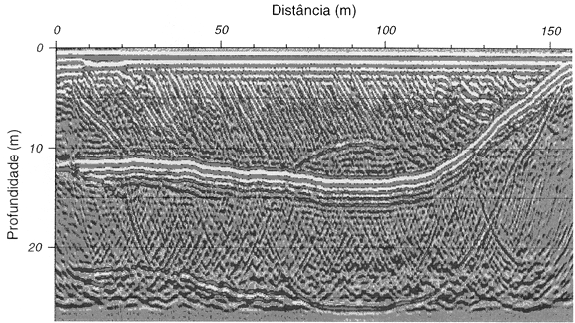This work presents two methods to perform migration of Ground Penetrating Radar (GPR) data with topographic correction simultaneously. Considering the kinematic similarity between seismic reflection and GPR data, mainly in a medium with high resistivity,like in the case of dry sand, several steps borrowed from the seismic processing can be applied to GPR data. Using this fact, reverse time migration (RTM) and Phase-Shift migration were modified to include during the migration process the correction of the topography of the ground. The GPR data acquired over a sand dune shows that the water table reflection is distorted by the irregular topography of the dune. The GPR section also presents a sequence of inclined reflectors corresponding to the cross-stratification generated by the prograding dunes. With these two modified methods of rnigration we have obtained images where the reflection from the water table was migrated to its real position and the reflectors corresponding to the dune fronts were also preserved. The methodology presented in this work allows to image the subsurface, therefore facilitating the interpretation and study where the ground has an irregular topography.
Ground Penetrating Radar (GPR); Migration; Topographic correction






